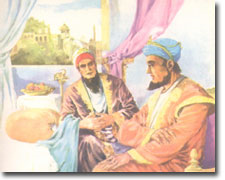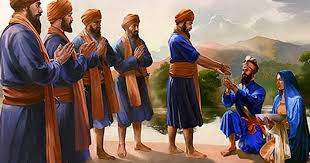BUNGA: A place of residence for the Sikhs or the place for rest for the pilgrims. There were at least 69 Bungas at Amritsar in the nineteenth century, some of them are still in existence. Another term for the resting hostel for the Sikh pilgrims is Saran. At Darbar Sahib, Amritsar Guru Ram Das Saran has been built for the pilgrims. Another Saran at Darbar Sahib is named Guru Nanak Niwas. Lately, a paid hostel named Aka/ Rest House, too, has been built. There are Sarans attached to almost all of the major Gurdwaras.
Discover the rich history of Darbar in Sikhism, symbolizing royal courts and sacred shrines, like the revered Sri Darbar Sahib in Amritsar.
Explore the historical role of Daroga, a key Sikh governance figure, ensuring law, justice, and the core value of seva in the medieval period.
Discover the diverse and secular legacy of Lahore Darbar, the Sikh Court led by Maharaja Ranjit Singh, showcasing a splendid blend of cultures and leadership.
Discover how 'morcha' shaped Indian politics from Sikh reforms to modern movements. Learn about its pivotal role in peaceful resistance and political fronts.
Explore the meaning of 'Panth'—a way of life and religious path in Sikhism, embodying the collective faith and commitment of the Sikh community.
Discover 'Raj Karega Khalsa,' the Sikh anthem symbolizing sovereignty and spiritual devotion, recited in unison at every religious Sikh service.
Discover the legacy of the Ranjit Nagara, the kettledrum installed by Guru Gobind Singh. Explore its significance in Sikh tradition and its royal symbolism.
Explore the historical and spiritual significance of Sarbatt Khalsa, the integrated conscience of the Sikh community and its supreme governing body.
Explore the rise of Sikh Army Panchayats in post-Ranjit Singh Punjab, their role in governance, and their stand against British influence on the frontier.
- 1
- 2












